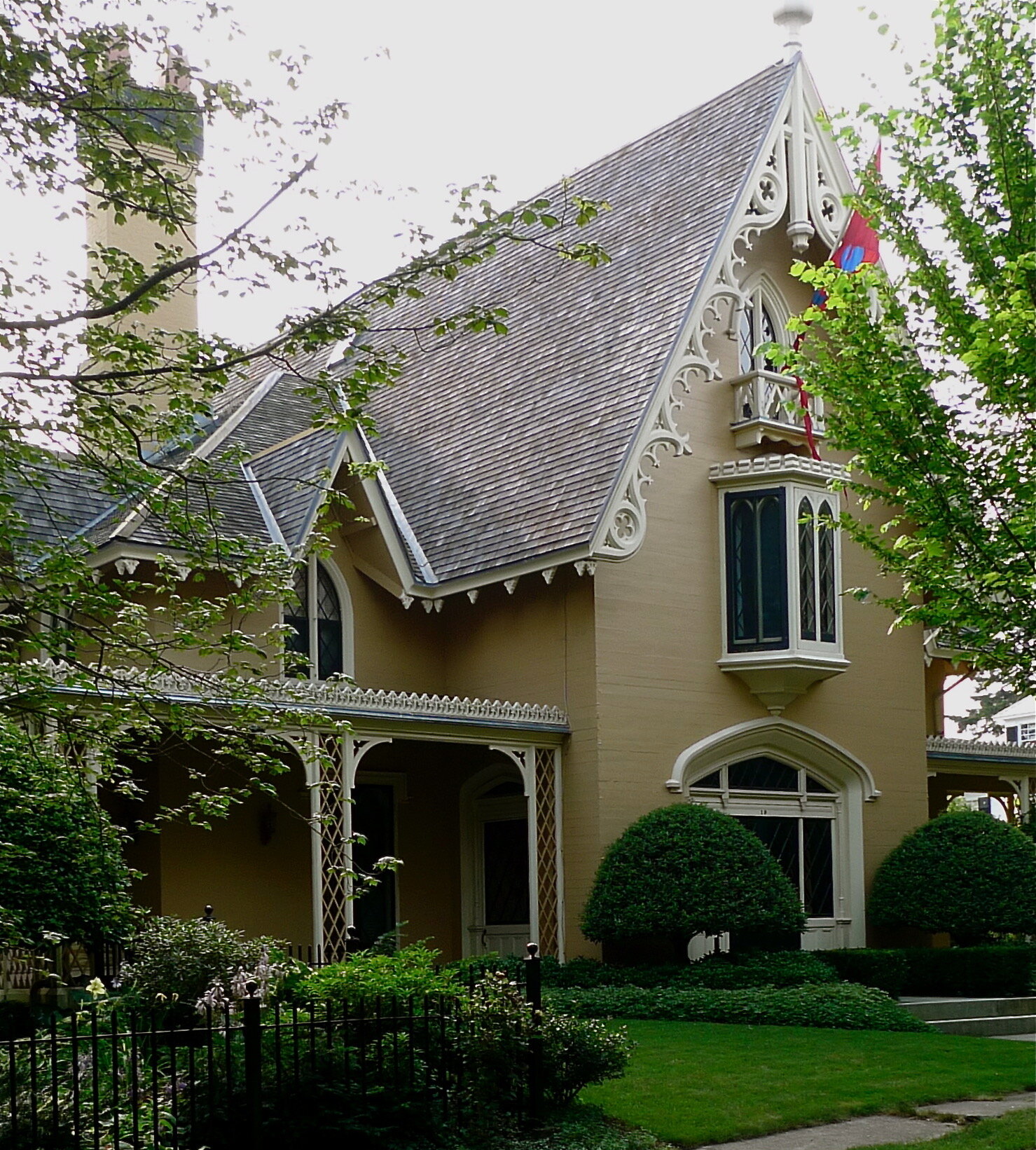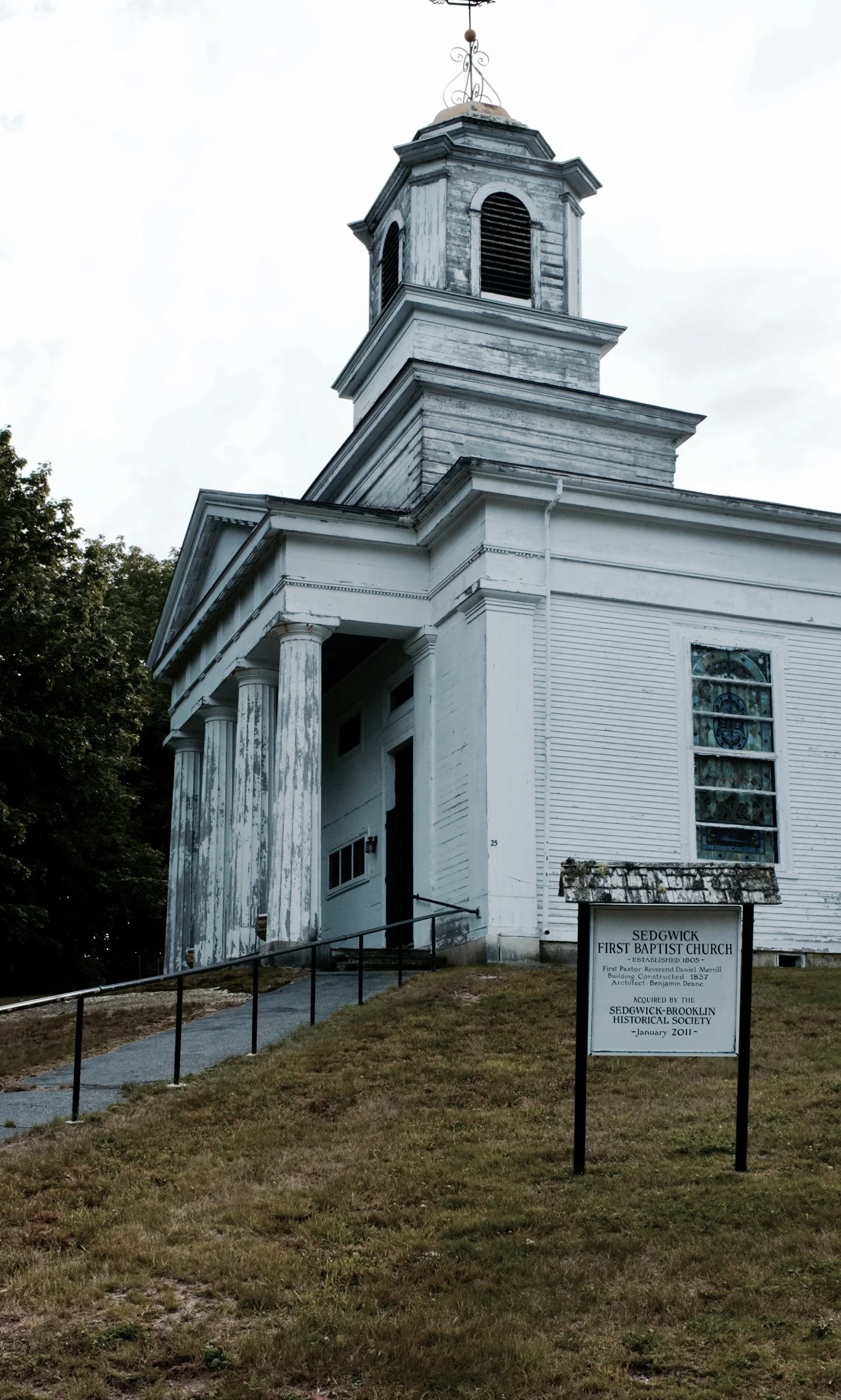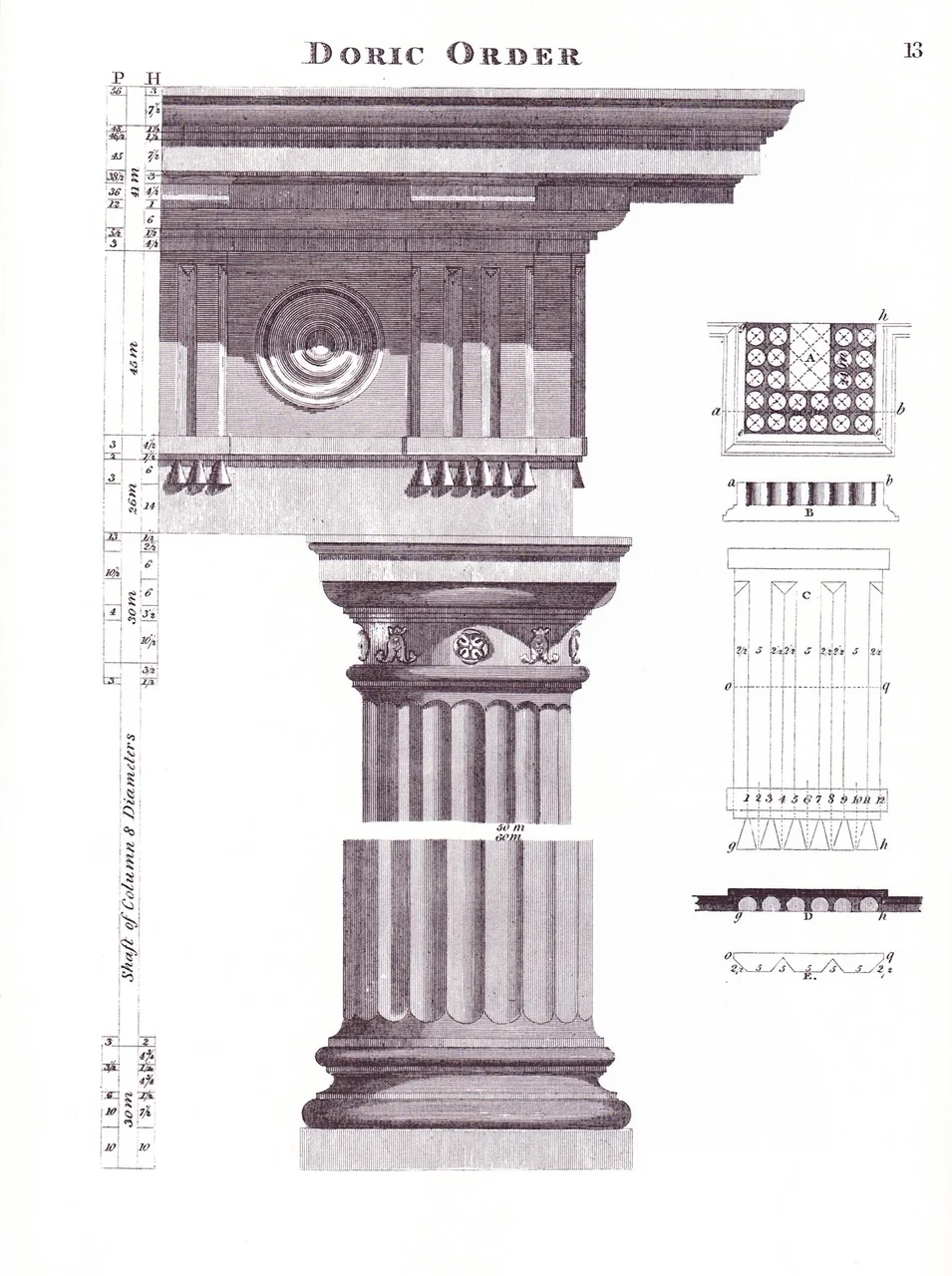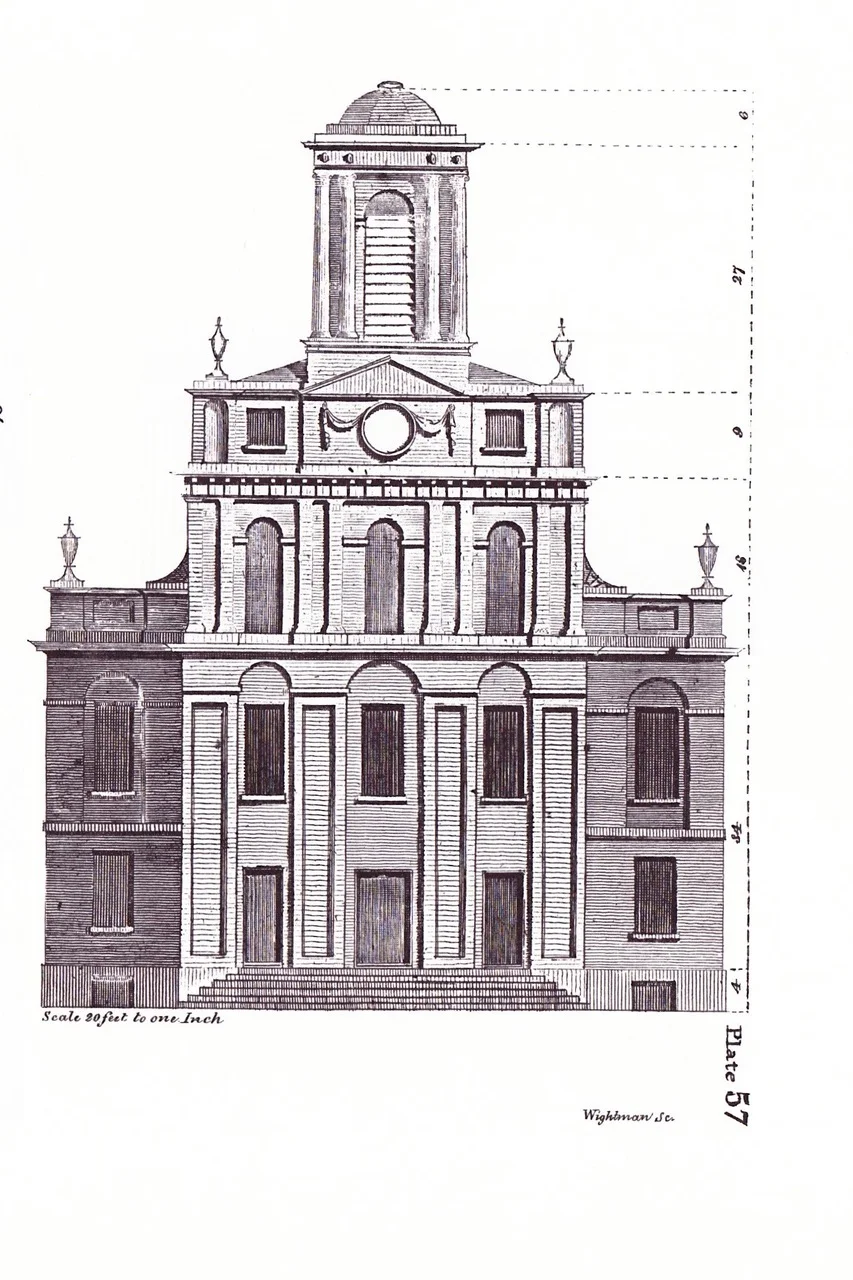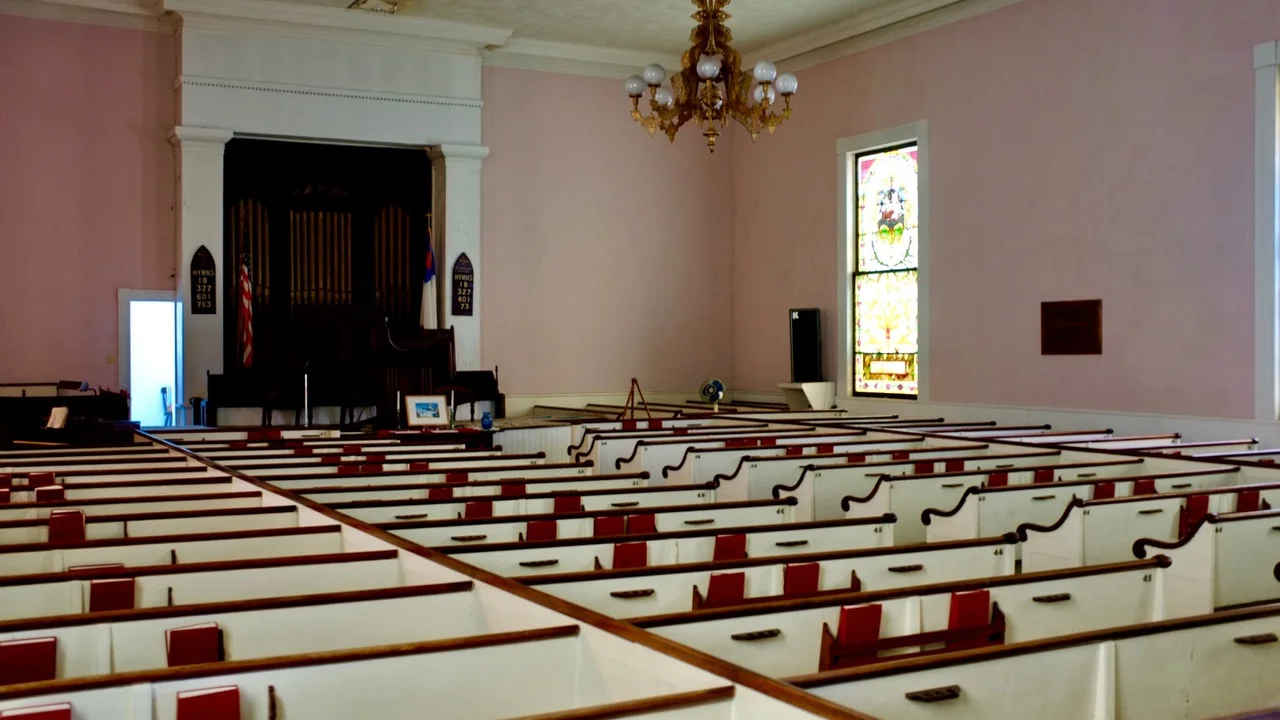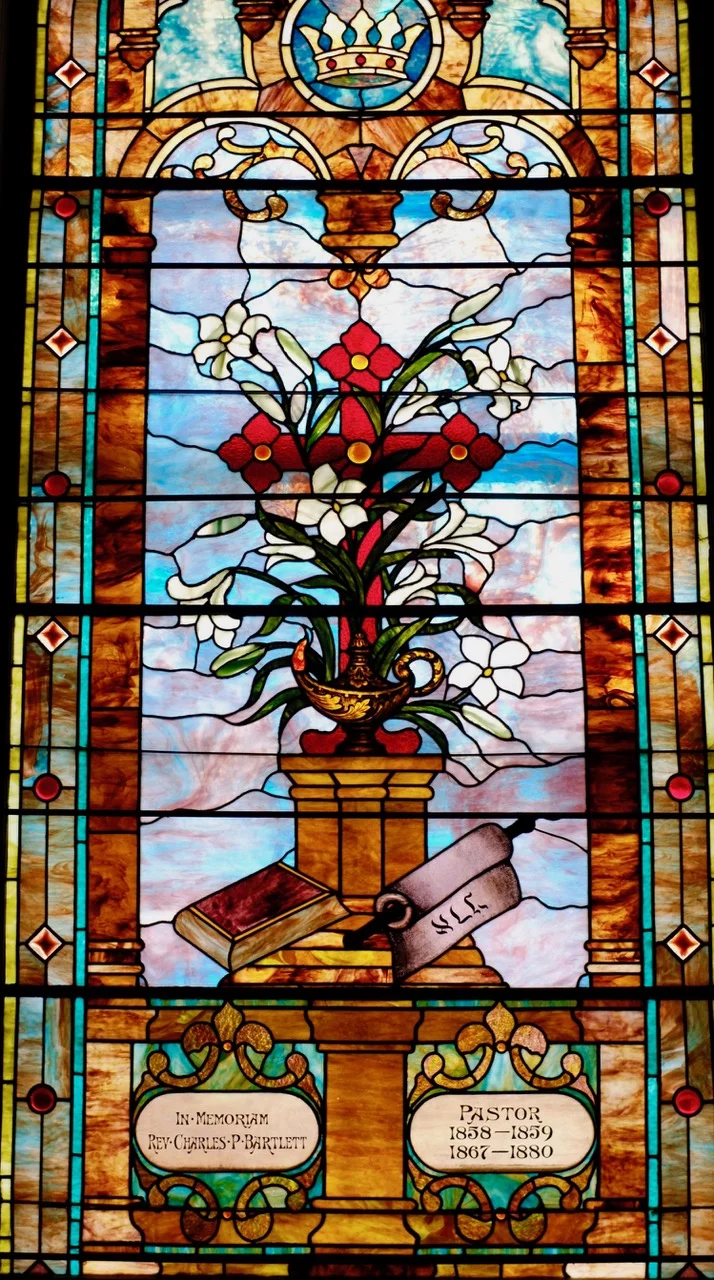
n
William Morgan: Book looks at metaphor, imitation, craft and continuity in architecture
One of the New England's most picturesque assets is the Greek Revival house, a sometimes brick but usually wooden structure with some classical details or perhaps even a portico, lining Main Streets and dotting the countryside. Aside from some legends about empathetic associations with Greece's war of independence, the application of a Doric column or the heavy lintel over the doorway was less politics than embellishment. Americans simply liked the style.
Temple form Greek Revival house in Winchendon, Mass., 1845.
— Photo by William Morgan
It is rather for architects and historians, such as Columbia University's Françoise Astorg Bollack, to parse the genealogy and meaning behind these temples of democracy. In her latest book, Material Transfers, Professor Bollack reminds us how the marble temples of ancient Greece were recreations of earlier wooden structures. While Americans built plenty of neoclassical civic structures, it was in the domestic realm that the wooden temple flourished.
The same kind of torturous evolution with multiple iconographic transferences can be seen in other styles, such as the Gothic Revival. A style that paid homage to the masonry forms of the pointed arch and the ribbed vault got translated into Carpenter's Gothic churches or cottages. Bollack also mentions cast iron, a revolutionary material that was molded with Renaissance details and often painted to look like stone.
Rotch House, A.J. Davis architect, New Bedford, Mass., 1845.
— Photo by William Morgan
The French-trained Bollack has done considerable restoration work, but Material Transfers: Metaphor, Craft, and Place in Contemporary is an attempt to redefine the meaning of contextual design. Rather than engaging in a century-old battle between modern and traditional – the angst of replica versus invention, Bollack suggests we discard an "outdated moral opprobrium." She presents us with at 22 projects characterized by "an unorthodox coupling and combination of forms."
Throughout, Bollack addresses such issues as metaphor, imitation, craft, and continuity ("Where are we to find a fresh place for 'the new' within the constraints of longed-for continuity"). The role of historic form in contemporary architecture, and how to respect the "continued validity of the traditional," are significant issues. But beyond the architectural theory, there is much delight to be found in the photographs of the "rich stew of hands-on trial-and-error research, collaboration between architects, manufacturers, and craftspeople."
Material Transfers is replete with serendipity, ingenuity, and the stretching of material limits. In Dairy House in England, glass lies between the horizontal wooden siding. An office block in downtown Copenhagen for a manufacturer of gold beads has a curtain facade of perforated copper that shimmers and changes color by night. A 14-story building in New York City looks just like its neighbors, except that it is made of pressed and carved glass.
The Dairy House, Somerset, England, Skene Catling de la Peña architect, 2007.
Such successful brainteasers include an abstract modern design for winery in Napa Valley, constructed of gabion (loose rubble constrained by wire fencing). A Paris town house is covered with a pixilated photograph of the building next door in a wood resin of the type used for road signs. Rammed concrete is the material of choice for a guest house added to a 1740 German vineyard.
Familiar forms inform many of these examples, but they are often realized in materials that seem wildly unfamiliar. Modernism's chief tenet of originality is stood on its head here, although many of the solutions respect tradition. This book's projects "begin to open the door to shift the discourse's center of gravity towards a more inclusive view of what 'making' is all about."
That said, anyone who is interested in contemporary architecture and how it can be integrated into historical settings, and invigorated with new, mostly non-polemical ideas will reap many visual rewards from this book.
One of my favorites from Material Transfers is the diagrammatical construction in welded galvanized wire mesh of an 1177 Italian basilica that was destroyed by an earthquake in 1233.
Basilica di Rete Metallicca di Siponto, Puglia, Italy, Edoardo Tresoldi architect, 2016.
But the project that really moves me is the Wadden See Center on the west coast of Denmark (the marshland is a UNESCO World Heritage Site) by the ever restrained and environmentally aware Danish designer, Dorte Mandrup. What at first appears to be a bold, modern statement is also a tribute to the local agricultural vernacular, and its roof and walls are surprisingly made of thatch.
Wadden See Center, Ribe, Denmark, Dorte Mandrup architect, 2017.
Françoise Astorg Bollack, Material Transfer: Metaphor, Craft, and Place in Contemporary Architecture, Monacelli Press, New York, 2020, $50.
Providence-based writer William Morgan has a degree in restoration and preservation of historic architecture from Columbia University. His latest book is Snowbound: Dwelling in Winter.
Painter and camouflager
Work by the American impressionist painter Everett Longley Warner (1877-1963). He was also a printmaker and major contributor to U.S. Navy camouflage in both world wars. He spent his last 18 years in Westmoreland, N.H., in that state’s Monadnock Region, long famous as “The Currier & Ives Corner” of New England and the home, summer and year-round, of many famous painters and writers. Sadly, nine years after his death fire destroyed his studio, resulting in the loss of many of his drawings, paintings, letters, notes and camouflaged ship models.
The gorgeous Park Hill Meetinghouse (a Congregational church), in Westmoreland’s Park Hill village, north of the town’s center. It’s gabled roof, portico, broad five-bay facade, paired pilasters at the corners and three entrances framed by pilasters and topped by a long cornice are well known among New England architects.
The church, built in 1764, has been moved twice and extensively altered, as have many New England churches dating back to colonial days.
It was originally built without a steeple, and was moved in 1779 and again in 1824 to its present location, in part reflecting population changes within Westmoreland. The 1779 move including adding porches to its sides. But with the second move, the porches were removed, the main chamber was enlarged, and the tower and portico were added, based on the designs of Elias Carter used in other area meeting houses. In 1853 its exterior was restyled in the Greek Revival style, which was very popular at the time,
William Morgan: Finding treasure of Downeast Doric
SEDGWICK, Maine
(New photos by William Morgan)
This small village on the Blue Hill Peninsula seems like so many towns along the rocky coast of Maine. Hardy souls who settled here mostly made a living from the sea – fishing and shipbuilding -- along with some quarrying of the granite ledges. Brooklin, next to Sedgwick, is where the famed essayist and children’s book author E.B. White wrote and set much of his writing there, perhaps most famously Charlotte’s Web.
Sedgwick in 1909.
In a land of many small Congregational houses of worship, what sets Sedgwick apart is its very handsome Baptist church. Earle Shettleworth, longtime director of the Maine Historic Preservation Commission, who knows more about the architecture of the Pine Tree State than anyone else, declares the Sedgwick church to be the finest example of the Greek Revival style in the state.
Superlatives aside, the Sedgwick church is both magnificent and a surprise. Situated above the village, First Baptist has a commanding presence, with its Doric portico, temple form and three-stage cupola.
Sedgwick Baptists broke away from the Congregationalists in 1805, most of the congregation with them. This building was built in 1837 at the height of the national craze for architecture putatively inspired by the ancient Greeks. The architect was Benjamin S. Deane from Bangor; the builder was Thomas Lord from nearby Surry.
Deane was a successful architect of other churches, houses and even a courthouse in eastern Maine. Like many country builders in 19th Century New England, Deane's architectural sophistication came from books, most especially the builder's guides published by Boston architect Asher Benjamin.
Benjamin's hugely popular how-to books did much to spread the high styles of Boston to New England's rural backwaters. The sixth edition of his American Builder's Companion added templates for Greek details, in addition to the Late Georgian that predominated in the earlier editions.
Plate showing the Doric order from The American Builder's Companion.
Benjamin's Greek orders were clearly 'borrowed' from earlier European books on the
subject. The Doric was the simplest order and thus the easiest for rural carpenter architects to fashion, especially in wood.
The cupola, however, is not Greek Revival, but rather a late Georgian form from one of Benjamin's own buildings, the West Meeting House, in Boston. Yet, this kind of mix-and-match without too much regard to historical purity was typical of American architecture.
Asher Benjamin’s West Meeting House, Boston. The church is in late Georgia, of Federal, style. This is the likely source for the Sedgwick cupola.
The interior is pretty similar to a lot of Protestant preaching boxes, with pews that could be from any Maine church of the early 19th Century. The tabernacle frame around the organ is, however, Greek.
Stained glass windows in the opalescent manner of the great glass artists John La Farge and Louis Comfort Tiffany were installed at the turn of the 20th Century. Alas, were these not run-of-the-mill copies, their sale might have contributed heartily to the $400,000 needed to restore the church.
Sedgwick's Baptists became pretty thin on the ground. By the congregation's 200th anniversary, in 2005, fewer than a handful of people came to celebrate. A few years later it was sold to an adoring fan who is trying to stabilize the church, searching for money to fix it up, and seeking to find an appropriate nonprofit group that would run the church as a community center.
William Morgan, based in Providence, wrote his Columbia University master's thesis on Alexander Parris, a New England Greek Revival architect. He contributed the introduction to the Dover reprint of Asher Benjamin's American Builder's Companion, and is the author of American Country Churches, among other books.


